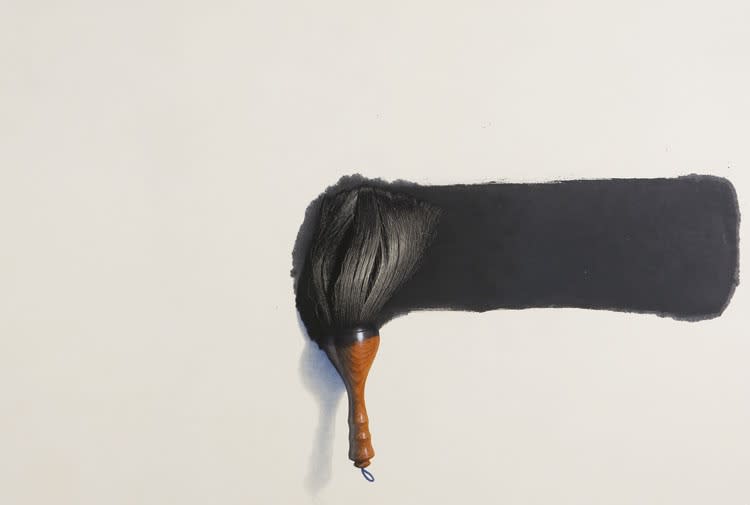Pontone Gallery is delighted to present a group show of five celebrated Korean artists working at the peak of their creativity. All have impressive CVs detailing numerous international exhibitions, awards and representation in private and museum collections.
Lee Jaehyo makes sculpture and reliefs from wood and metal, which are transformed with painstaking skill into lustrous and refined objects. The biomorphic shapes of egg, pod and amoeba, and the modular nature of their construction, allude to ideas of growth and reproduction. What is strongly expressed is a concern for, and immersive appreciation of, the natural world. His raw material is made luxurious by intervention, its beauty revealed by the craft skills of a master cabinet maker.
Bae Joonsung deploys a sophisticated and complex process of making images. The artist’s subjects are carefully painted; then these paintings are photographed and converted to a ‘lenticular’ print, which allows another image to be revealed as the viewer changes their angle of vision. Important to this process is an idea of a painting within a painting; alternative versions of a painting can exist within the same surface. He presents a synthesis of past and present, reality and artifice, naked and clothed. The images express the elusive nature of perception.
Lee Jinyong produces meticulous, wall-mounted constructions and photo-realistic paintings. Fascinated by books, text and script, his pieces are full of undeciphered and mysterious messages which express the weight of history. They have, by virtue of his obsessive and highly-skilled attention, become containers for expansive ideas about the importance of memory and the value of history in its many interpretations. These pieces suggest we look over our shoulders before moving on.
Lee Jungwoong paints the tool of his trade. The brush, with its luxuriant, flowing hair, is the protagonist. It sweeps across the surface, leaving its dense, inky mark in pools and calligraphic trails that record the dynamic action of hand and arm. He makes the act of painting tangible and fixes the gesture, reinforcing the idea of painting as an event. These skilfully-realised, graphic images are a reminder of the transformative effect of painting.
Chun Kwang Young constructs wall-mounted works from painstakingly formed, multiple elements. Polystyrene shapes are wrapped with dyed sheets of mulberry paper, culled from pre-war textbooks. They are tied in traditional fashion to make parcels, which are assembled into panels. The guiding schema of their composition is a secret, something emotional and hermetic, akin to the possible content of the parcels.


